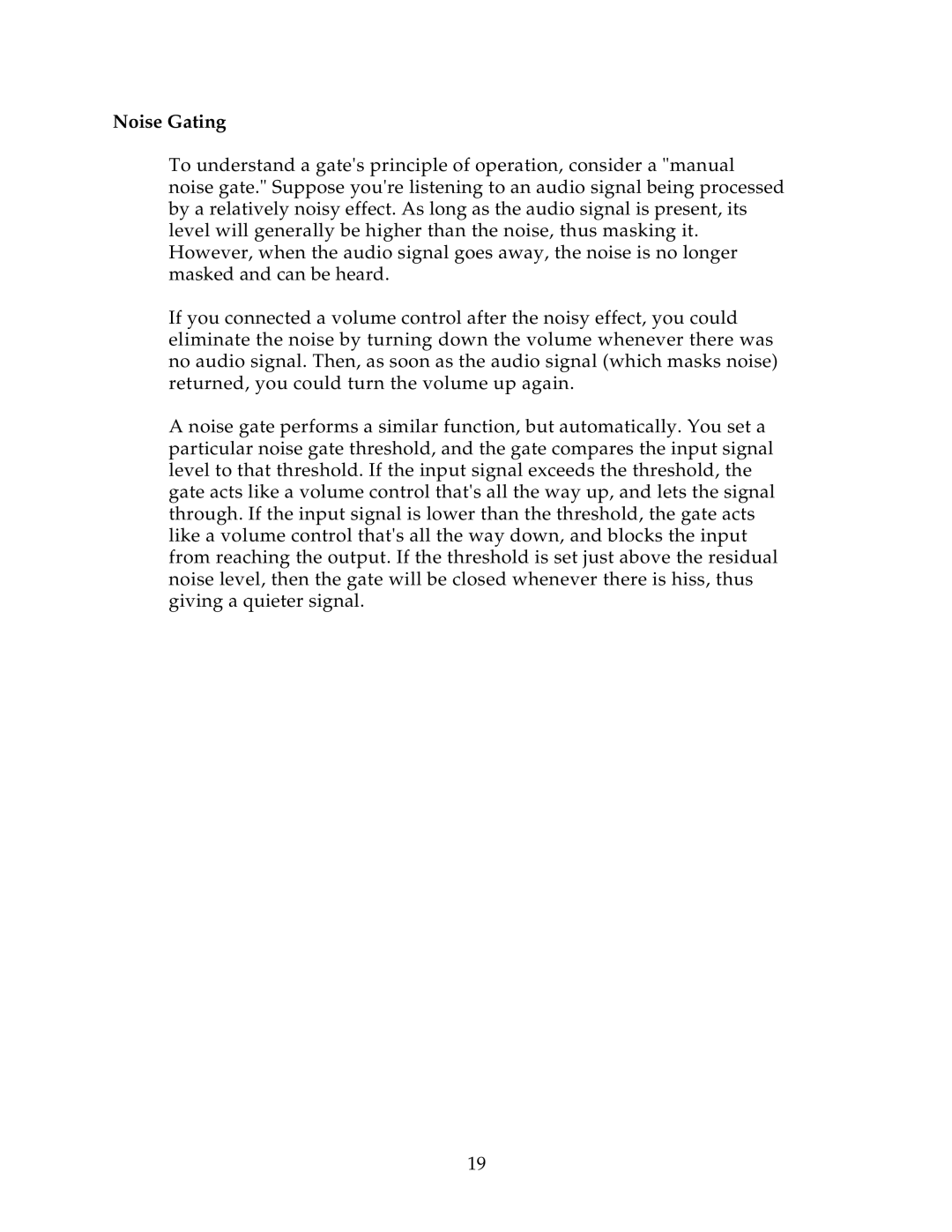Noise Gating
To understand a gate's principle of operation, consider a "manual noise gate." Suppose you're listening to an audio signal being processed by a relatively noisy effect. As long as the audio signal is present, its level will generally be higher than the noise, thus masking it. However, when the audio signal goes away, the noise is no longer masked and can be heard.
If you connected a volume control after the noisy effect, you could eliminate the noise by turning down the volume whenever there was no audio signal. Then, as soon as the audio signal (which masks noise) returned, you could turn the volume up again.
A noise gate performs a similar function, but automatically. You set a particular noise gate threshold, and the gate compares the input signal level to that threshold. If the input signal exceeds the threshold, the gate acts like a volume control that's all the way up, and lets the signal through. If the input signal is lower than the threshold, the gate acts like a volume control that's all the way down, and blocks the input from reaching the output. If the threshold is set just above the residual noise level, then the gate will be closed whenever there is hiss, thus giving a quieter signal.
19
